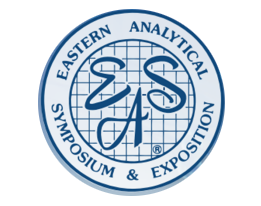One-Day Course
Monday, Nov. 14; 8:30am – 5:00pm
Mr. Gregory Martin, Complectors Consulting, Pottstown, PA
COURSE DESCRIPTION
This highly interactive course is designed to provide participants with a lifecycle approach to developing and validating analytical methods, including elements aligned with QbD concepts. The course will build on traditional concepts of method development, validation and transfer by introducing the Analytical Target Profile (which identifies what the method is expected to accomplish), fostering method understanding (using QbD concepts to explore the method operable region and stressing the importance of real samples in the environment where they will be tested) and demonstrating how these principles can be used iteratively as methods change location or evolve technically.
WHO SHOULD ATTEND
Chemists, supervisors, managers or directors from pharmaceutical (human and veterinary), generic or OTC companies or contract research organizations who are responsible for development, validation, verification or transfer of analytical methods, and regulatory affairs/CMC personnel responsible for filings involving analytical methods.
TOPICS
- Introduction: Using a Lifecycle Approach for Analytical Procedures
- Discussion of Terminology used in the Lifecycle Approach
- Method Design: Introducing the Concept of the Analytical Target Profile
PRACTICAL EXERCISE: Developing an ATP - Method Development Using the ATP as a Tool
a. Assay or uniformity, stability indicating methods, dissolution
b. Knowledge Gathering and Knowledge Management
c. Risk Assessment and Analytical Procedure Control Strategy
PRACTICAL EXERCISE: Approach to developing a stability indicating method - Method Qualification: Validation, Verification, Transfer
a. Rationale for demonstrating the validity of an analytical method
b. Lifecycle approach to method validation
c. Design of validation experiments and establishing acceptance criteria
PRACTICAL EXERCISE: Designing a validation protocol - Continued Procedure Performance Verification
a. Routine monitoring, trend analysis, continuous improvement - Method Modifications: Change Control and Method Revalidation Strategies
- Troubleshooting Analytical Methods
- Review and Opportunity for Additional Questions

ABOUT THE INSTRUCTOR
Mr. Greg Martin is President of Complectors Consulting which provides consulting and training in the area of Pharmaceutical Analytical Chemistry. Mr. Martin has over 25 years experience in the pharmaceutical industry and was Director of Pharmaceutical Analytical Chemistry (R&D) for a major PhRMA company for a number of years. In addition, he has volunteered for the USP for over 10 years, and currently serves on the General Chapters – Chemical Analysis Expert Committee, and serves on Expert Panels on Validation and Verification, Residual Solvents and Use of Enzymes for Dissolution Testing of Gelatin Capsules. He has particular interest in QbD/Lean approaches to dissolution testing, impurity methods, method lifecycle (development/validation/transfer) and instrument qualification, and is passionate about using good science and sound logic to achieve high quality results, consistent with cGMPs, while minimizing resources. Mr. Martin is author of several papers in the areas of dissolution and analytical method validation, and is past chair of the AAPS In Vitro Release and Dissolution Testing Focus Group.

